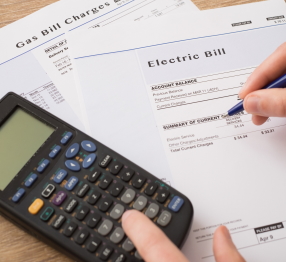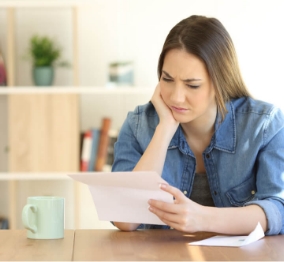About the Australian Energy Council
We represent 20 major electricity and downstream natural gas businesses operating in the competitive wholesale and retail energy markets. These businesses collectively generate the overwhelming majority of electricity in Australia, sell gas and electricity to over 10 million homes and businesses, and are major investors in renewable energy generation.
General Questions

If you’re unable to pay your energy bill on time, you should contact your retailer as soon as possible. Your retailer’s contact number is located at the top of your bill.
Retailers offer specialised services for customers experiencing payment difficulties. This might include a payment plan, an extension, or other assistance that allows the customer to pay a bill over time, without risking disconnection. Retailers also have hardship programs to support vulnerable customers or people in need. Hardship payment plans may offer additional flexibility and certain customers may be eligible for a government concession. Retailers can also provide referrals to welfare agencies and financial counsellors.
If COVID-19 has affected your ability to pay your bills, have a confidential discussion with your electricity and gas retailer. Learn more about COVID-19 assistance here.

Your energy retailer receives meter readings from your local distributor. You may be issued with an estimated bill if your meter couldn't be read; the most common reasons are access issues, such as locked gates, pets preventing access or the meter being located in an inaccessible place. In rare instances, a meter may not be read due to weather events like flooding or bushfires, pandemics, faulty meter reading equipment or issues with the meter data.
Learn more here about what an estimated read means, how to know if you've been issued an estimate, and how to avoid them.

You may be able to save on your energy bill by shopping around and finding an offer that suits your household’s needs and preferences. The videos below show how you can easily compare your bill to other offers, using government comparison sites:
- Victorian Energy Compare is a free, independent Victorian Government price comparator.
- Energy Made Easy is a free and independent comparison site operated by the Australian Energy Regulator. Customers can compare retailers and plans in New South Wales, Queensland, South Australia, Tasmania and the ACT.
You can contact your retailer any time to talk about different plans or ask if there are cheaper tariffs available. If you decide to switch retailers or plans, contact the retailer who made the better offer and they will do the rest.
If you decide to switch, it’s important that you first:
Read the Energy Price Fact Sheet: Your new retailer will provide a summary of the offer, including prices, terms and conditions. The fact sheet must be provided for all generally available offers in Victoria, Queensland, New South Wales, South Australia, Tasmania and the ACT.
Remember the cooling off period: You will have ten business days to cancel the new offer if you change your mind.
Determine payment options: Ask about flexible payment options, such as monthly billing.

Each state and territory has its own Ombudsman that handles complaints about electricity and gas providers. You should try and resolve your complaint with your energy retailer first, but if the problem isn't fixed or you're not happy with the response, contact your local Ombudsman by phone or submit a complaint online. Learn more here.
For solar PV installation or battery issues, the Clean Energy Council is your best point of contact.
Clean Energy Council accredited installers are certified and trained to meet Australian and industry standards. Visit the Clean Energy Council site to find an accredited installer near you.
If you’ve received a strange text, email or call that was supposedly from your energy provider, do not respond. Instead directly contact your retailer, they’ll be able to confirm whether it’s from them or not. It is also important to report these matters to your provider, so they can clear any confusion and make other customers aware.
The AEC does not have oversight of the PPAs process, instead it’s best to consult the information available on the Essential Services Commission website.
General Bill Questions
While you’re billed a single price by your retailer, your bill is actually made up of several different components.
Each bill will vary depending on the retailer and the energy plan chosen. Your bill also reflects how electricity is supplied: Generators, distributors and retailers are all involved in delivering power.
Costs vary from state-to-state depending on things like the types of generation sources, market size, network size and state-based green schemes.
| Wholesale and retail |
Wholesale energy: your energy retailer buys gas and electricity from the wholesale market. They then sell this energy to you and supply it directly to your home. The cost of buying and selling energy from the wholesale market is one of the largest costs in your bill. Wholesale energy prices change frequently and retailers manage the risk of extreme price fluctuations in the wholesale market to ensure you pay the same rate for each bill. Operating costs: the costs associated with operating a retail business, like customer service, billing and sales. |
| Transmission |
The cost of building, maintaining and operating high voltage electricity transmission networks. Energy bought from the wholesale market is put directly into the transmission system. This energy then moves into the distribution system, and then to your home. This cost is passed to retailers and then included in customer bills. |
| Distribution |
The cost of building, maintaining and operating the gas pipes and electricity networks that deliver electricity to the home. This cost is passed to your energy retailer and included in your bill. |
| Green Schemes |
This may include the costs associated with carbon reduction schemes, renewable energy and feed-in tariffs for homes with solar panels, as well as government energy efficiency schemes. |
A tariff is how a customer is charged for energy consumed. The tariff is the breakdown of how you are charged for energy, your retailer will explain your tariff when you sign up.
Your tariff is generally made up of:
- The daily supply charge is a fixed rate service charge to cover the cost of maintaining your energy supply, even if the household does not use any energy – similar to paying a rental charge or a water daily supply fee. It may be displayed on a bill as a cents per day cost or a total amount for the billing period.
- Consumption or usage charge is the cost for energy a household uses during the billing period. It may be displayed on a bill as cents per kilowatt hour (c/kWh) for electricity or cents per megajoule (c/MJ) for gas.
Increasingly tariffs are moving away from a ‘single rate’ tariff, learn more below.
There are generally two types of tariffs:
- A single rate tariff that remains at the same rate whenever a household consumes power; and,
- Tariffs that may vary at certain times, or seasons. Additionally, there are also controlled load tariffs for specific appliances.
Each retailer will bundle their tariff into an energy offer, which may include discounts and other features. There are demand tariffs, time of use tariffs, tariffs that incentivise use during the day or night – you can speak to your retailer to determine the best option for your use.
Gas Tariffs often include ‘blocks’. Under this type of tariff, the price you are charged will depend on the amount of gas you consume, i.e. a retailer may charge one price for the first 10mj a household consumes per day, and a different rate for the remaining consumption. Gas tariffs may also include seasonal pricing, with the rate usually increasing in winter when demand is higher.
A default offer is intended to be a cap on the price retailers are allowed to charge their customers currently on standing offers. Customers on standing offers are generally those who have never made a choice to enter into a market deal with their retailer, or who is on an expired market deal.
The Federal Government tasked the Australian Energy Regulator with determining the default offer in NSW, South Australia, and Queensland. In Victoria, the state government made a similar request to the Essential Services Commission.
Both regulators were requested to develop:
- Default Offer prices for standing offer customers on relevant tariffs; and,
- A reference bill amount for each network distribution region to make it easier for customers to compare offers.
The default offers will affect all residential and small business customers currently on flat rate standing offers. The default offers will limit the prices charged to standing offer customers, but not to customers on market offers.
Helpful Resources
- Energy Made Easy VISIT SITE
- Victorian Energy Compare VISIT SITE
- Australian Competition and Consumer Commission VISIT SITE
- Clean Energy Council VISIT SITE
- Australian Energy Regulator VISIT SITE
- Australian Energy Market Commission VISIT SITE
- Australian Renewable Energy Agency VISIT SITE
- Australian Energy Market Operator VISIT SITE
Factsheets

Extreme weather and electricity supply

Heatwaves and extreme weather can mean higher electricity demand periods. The Australian Energy Council and Energy Networks Australia highlight how the power system manages additional risks on higher demand days.

Financial support: Help to stay on top of your bills

Energy retailers offer a broad range of confidential assistance and can help you to manage upcoming bills. If you’re feeling overwhelmed with other money concerns, you can also contact a financial counsellor. Financial counsellors are skilled professionals who can help you plan your way out of debt.

Estimated Bills: What are they and how to avoid them?

You may be issued with an estimated bill if your meter couldn't be read. Here we detail what an 'estimated read' means, how to know if you've been issued an estimate, and how to avoid them.

Home office energy savings

With more people now working from home, these energy efficiency tips offer practical advice that can help to cut your energy use and bills.
Send an email with your question or comment, and include your name and a short message and we'll get back to you shortly.


